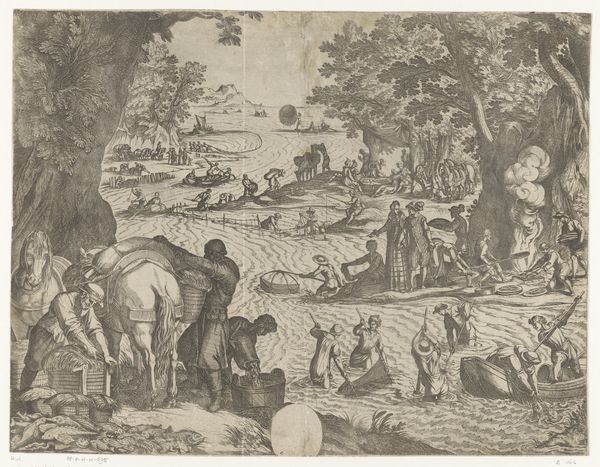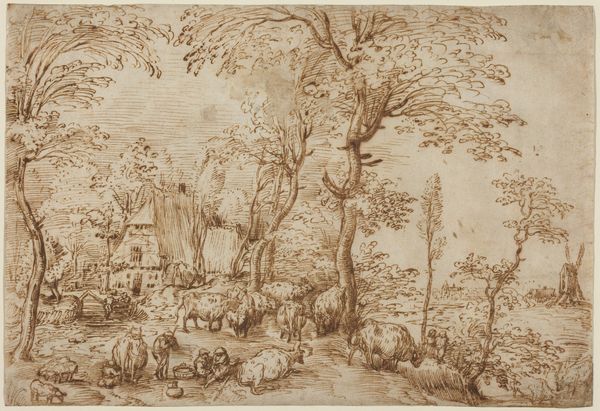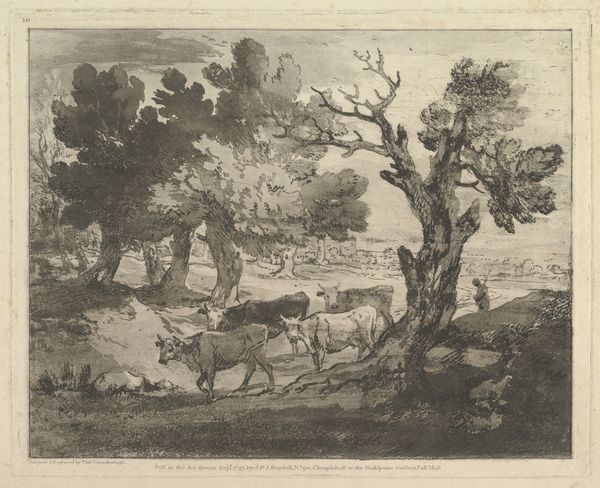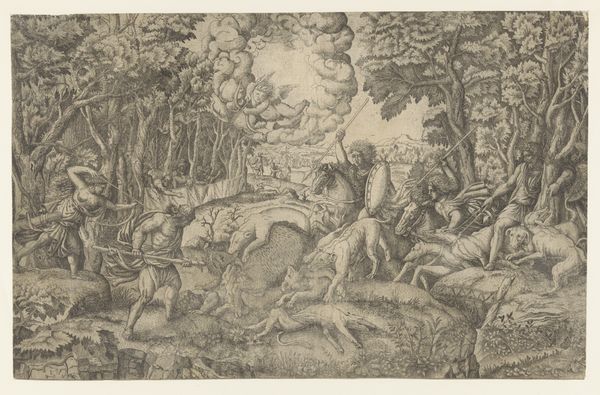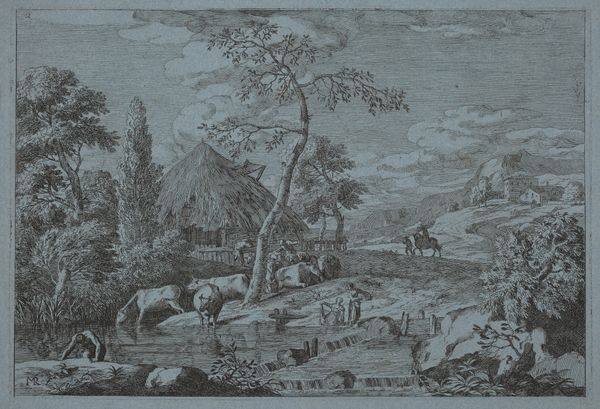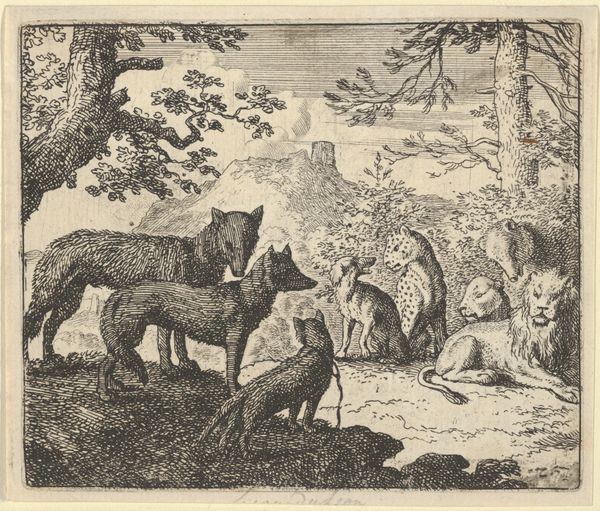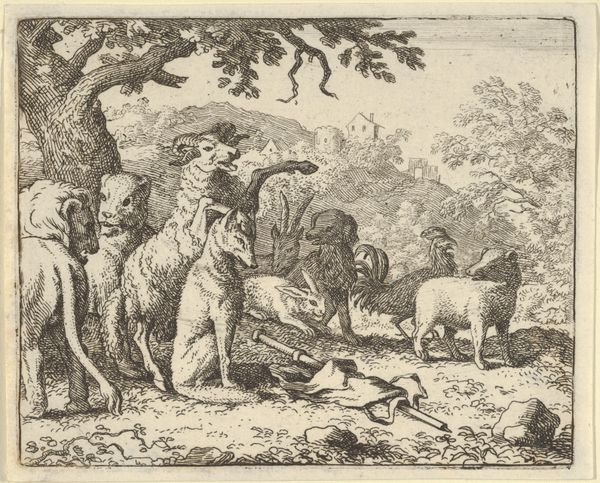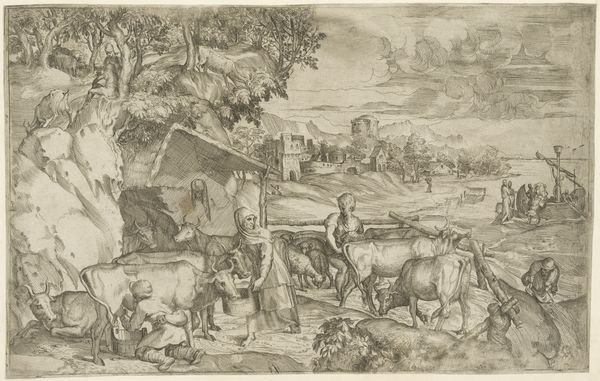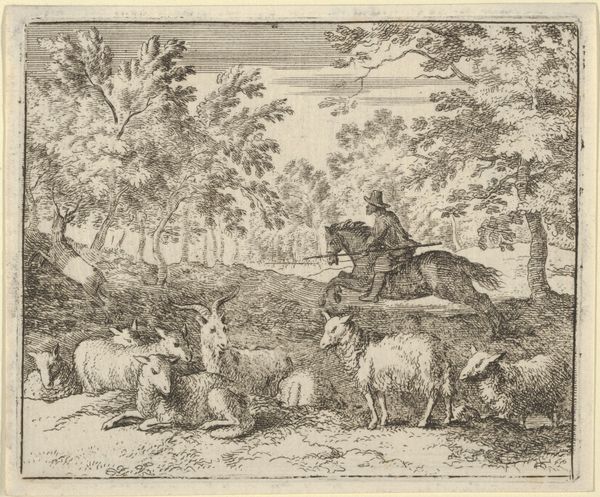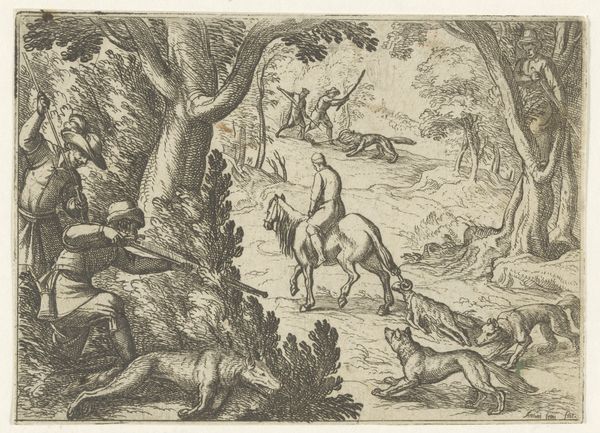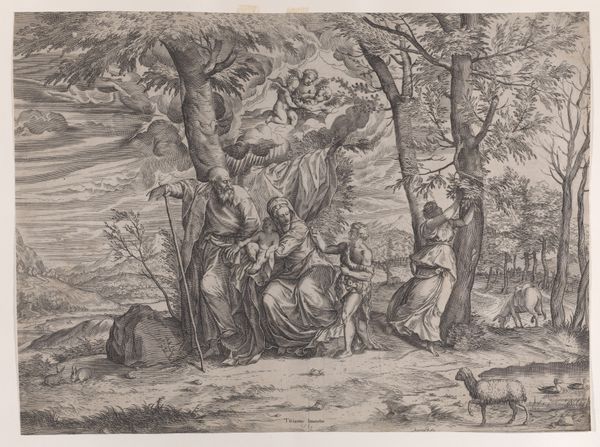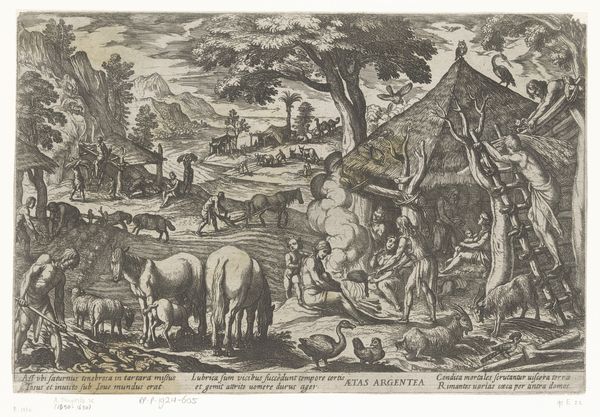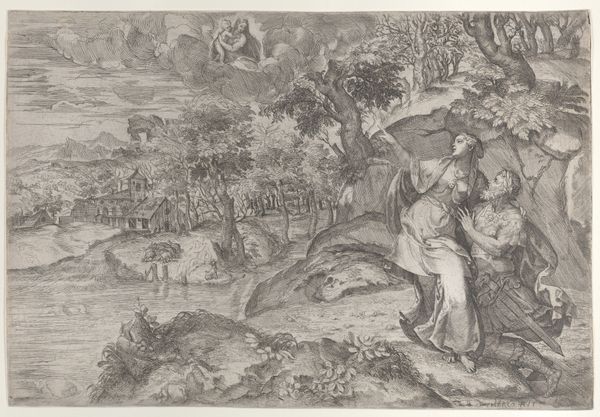
drawing, print, etching, engraving
#
drawing
# print
#
etching
#
landscape
#
figuration
#
pencil drawing
#
genre-painting
#
history-painting
#
northern-renaissance
#
nude
#
engraving
Dimensions: Sheet: 26 3/8 × 17 13/16 in. (67 × 45.2 cm)
Copyright: Public Domain
Nicolaes de Bruyn created this detailed engraving, "Adam and Eve in Paradise", sometime between 1571 and 1656. The composition brims with a variety of animals set within a lush, Edenic landscape, all rendered in meticulous detail with fine lines and tonal gradations. This creates a sense of abundance and harmony, yet also hints at a structured, almost taxonomical arrangement of the natural world. De Bruyn's choice of engraving as a medium lends itself to a precise, almost scientific depiction. We see the influence of Renaissance humanism and its emphasis on empirical observation. The image doesn't just depict a biblical scene; it presents a vision of the world organized and understood through a system of visual representation. Consider how the seemingly idyllic scene is framed. The underlying structure suggests a world on the cusp of change, as the act of naming and cataloging also implies a claim of dominion and a shift from the purely divine to the human-centric. This tension reminds us that art is always an interpretation, a way of ordering and understanding our place in the world.
Comments
No comments
Be the first to comment and join the conversation on the ultimate creative platform.

